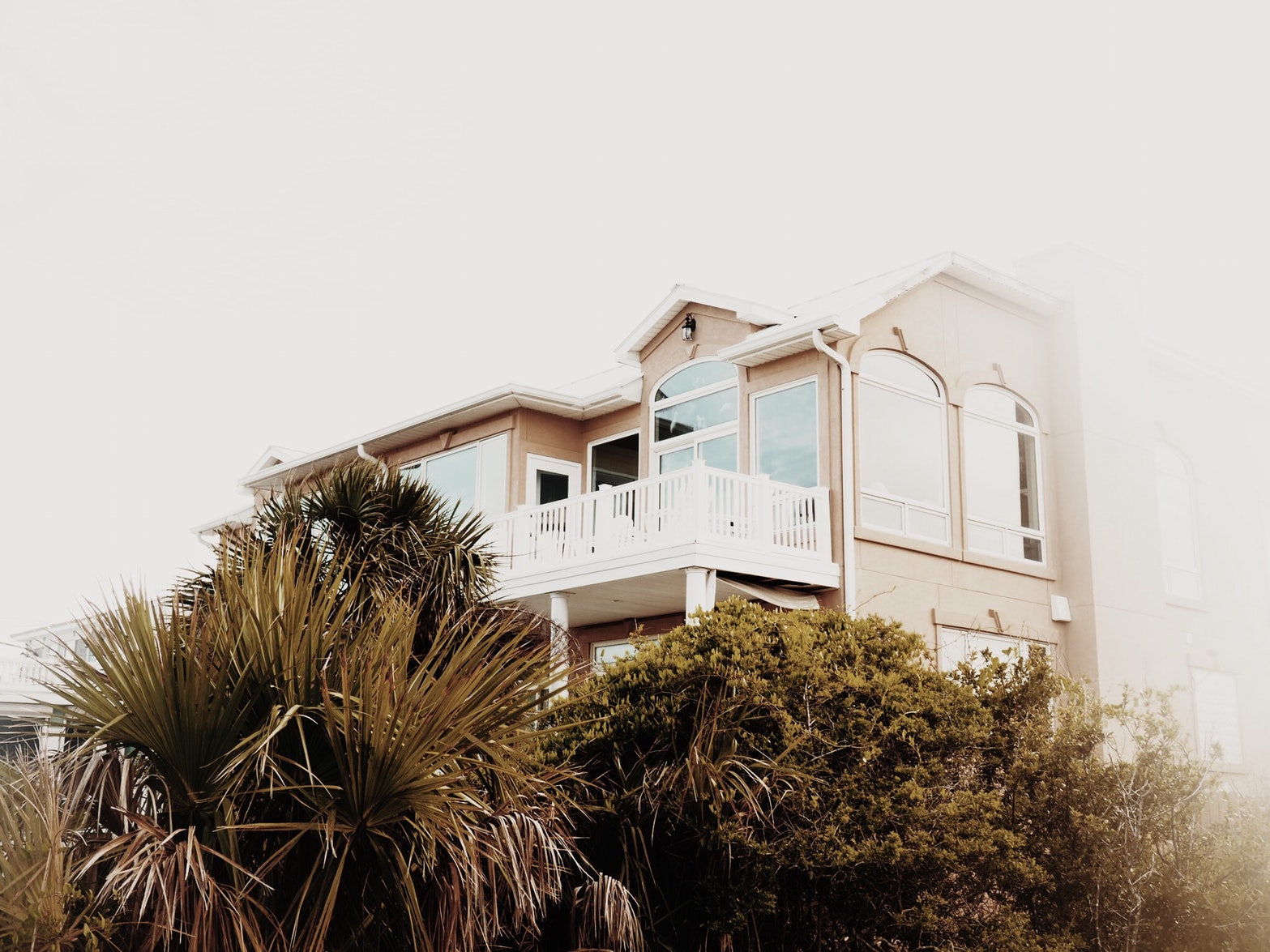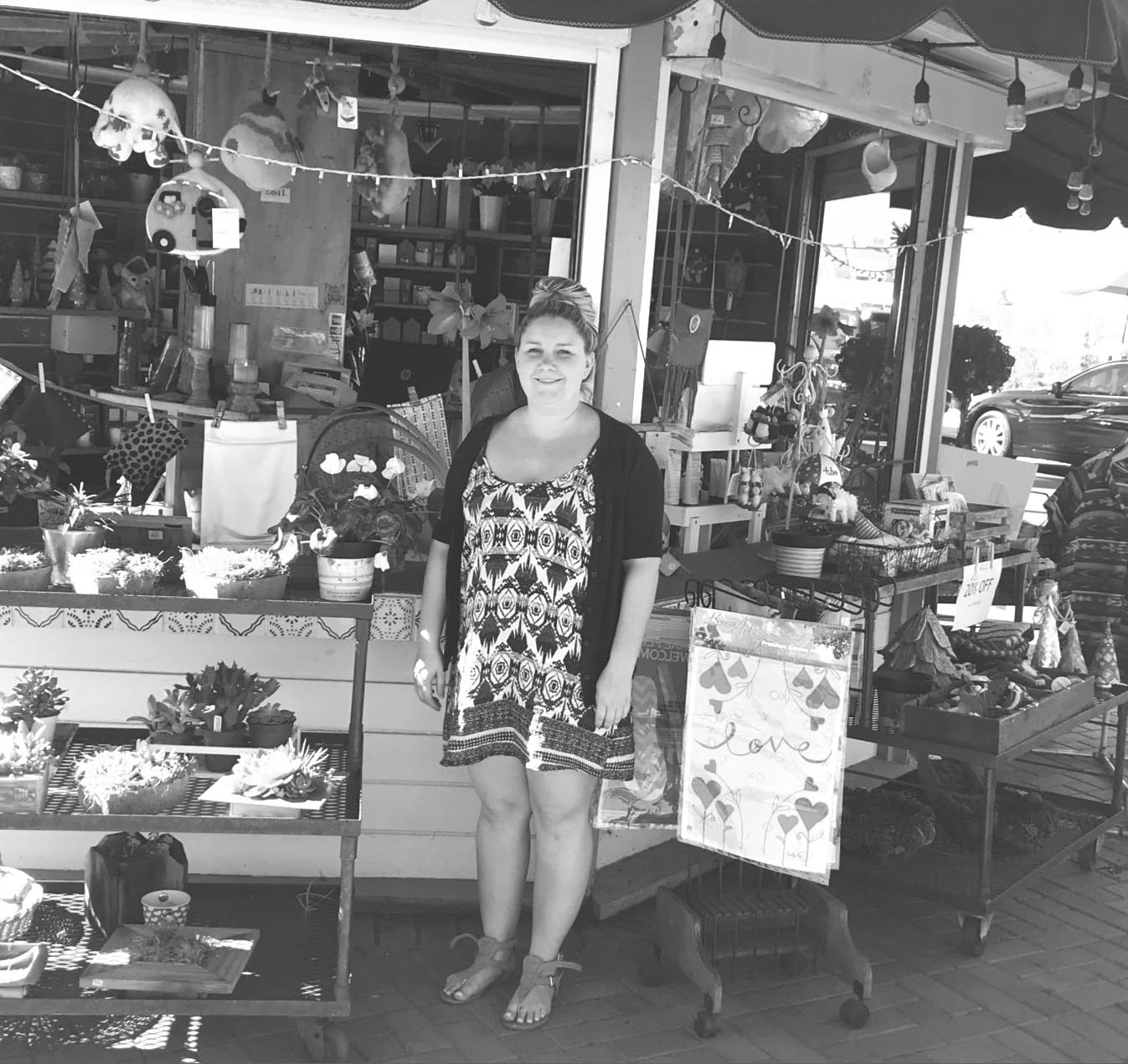Author: Igor Nastaskin
13 Smart Ways to Sell Your Home as Fast as Possible
Thinking about selling your home? Here, Reader’s Digest offers 13 smart ways to sell your home faster! 1. Sell at the right time If you have been debating whether or not to sell your home, spring it the best time to do so. Listing your home from March through May is usually the best time, since conversation rates and sales velocity usually are at their highest levels for the year. 2. Price your home right Pricing your home correctly from the beginning is very important. This not only will allow you to sell your home faster, but it also will help you net more money. Try putting yourself in the buyer’s shoes. Would you offer full price if the house across the street has been on the market for five months? Buyers are less likely to get into a bidding war over a house that has been on the market too long, so price competitively from the beginning. 3. Take great pictures Most buyers begin their search for a new home online, where images are key. Posting low-quality, not enough or unappealing pictures will turn away potential buyers. Pictures should be high-quality and shot with a 5-megapixel or better camera rather than a cell phone. Also be sure to let in as much light as possible when taking your pictures, and make sure you don’t have any burned-out bulbs and turn on all the lights. 4. Write an enticing listing description Give potential buyers details on how amazing your home and area is, including facts about nearby schools and shopping or regular events that happen nearby. A buyer should feel like the home is a special piece of property to be acquired. 5. Improve the curb appeal The first thing a buyer sees is the exterior of the house, so it’s vital that it looks as best as it possibly can. Focus on giving the exterior a well-maintained look by removing weeds and debris and trimming the lawn and bushes. You also might consider adding some potted plants or shrubs, a sculptural item, and maybe a bench or chairs. 6. Update your home with fresh paint New paint can refresh the look of your home and help it sell quicker. For exterior color, ask if the home looks inviting and well-kept from the road and whether the color makes it look more expensive. For interior paint, choose colors that are appealing for most buyers, such as a neutral, warm beige. Keep in mind that if the paint is tired, marked, chipped and worn looking, it will give the impression that the home is not taken care of. 7. Stage your home like a pro Cast personal preferences aside and stage your home in a way that appeals to the mainstream market. Top of the list is decluttering to help create a canvas for the buyers to imagine their own life in the home. Since you have to pack anyway, get a head start and store the majority of the items you don’t use daily. 8. Take out personal touches Family photos and heirlooms can be a hindrance when it comes time to sell your home. Remove the distractions of your personal items so that the buyers are picturing themselves inside the home rather than looking at your stuff. 9. Be flexible with showing times Balancing showing your home alongside a busy work and family schedule can be challenging. If you can make your home available to see at any time for two weeks, however, there will be a greater chance of it moving off the market. The easier it is for agents to show a property, the more it will get shown, and the more showings, the more offers. 10. Say Goodbye to Fido Pets aren’t always a favorable factor when it comes to selling your home. In fact, many of people seeing your listing, may not find your dog or cat cute. On top of that, they may worry about the damage your pet has done to the house. It is important to remove your pet and its items—such as dishes, beds and litter boxes—from sight for photos and showings. 11. Make your house smell good Potential buyers evaluate your home with all of their senses. Not only are they examining the look of your space, but they also are judging the smell. Be sure to shampoo carpets to remove any stains and pet orders, and try adding a scented candle of vanilla, cinnamon, apple or lavender. 12. Light the way Walking into a house that is clean, airy and has a lot of natural light flowing through gives the impression of a happy home. Stage your home to accentuate the positive, add lighting where appropriate and opening the clean windows. 13. Go modern with drone footage Investing in a photography package with drone footage can help your home listing stand out above the others. This service can cost anywhere from $300 to $500, and should only be used if it will add value to the listings due to great surroundings such as lakes, canals, golf courses, parks, and of course, a clean and good-looking neighborhood. Don’t have great surroundings? Just stick with professional photos.
How to Make Your Home Appear Warmer—and Less Sterile—to Potential Homebuyers
Arranging furnishings and decor in a house so buyers can envision living there can be an important tool for home sellers. In fact, studies show that staged homes sell 88 percent faster and for 20 percent more money than those that aren’t staged. However, home staging can be taken too far. Home sellers sometimes clear out every family photo, pillow and doo-dad until their house appears quite sterile. Here, Realtor.com offers some ways to strike a warm yet aspirational balance, so that buyers feel that your house is the ideal place for them. You still need to declutter We all tend to collect a lot of stuff, and that stuff is going to distract people from seeing your home’s best features. So reduce, reduce, reduce. You likely will end up adding back a few things, but it’s easier to see what to keep if you’re starting with a nearly empty slate. When you see how amazing your decluttered home looks, you might want to do even more. So, be merciless in your editing before you start adding the details that will warm your space. Keep only the right furniture How do you know how much of your furniture to keep? A good principle to keep in mind is that you’re trying to highlight the best attributes of the space. So, rearrange furniture (and remove some pieces) to make a room look and feel as spacious as possible. You want enough furniture to make the room comfortable, but not so much that people miss architectural details and the feel of the space itself. If you are renting furniture to stage your home, don’t pick matching sets that can create a sterile atmosphere. Mix things up to inject some personality; there needs to be a sense of style. Warm up your lighting Changing the lighting can make a big difference; it’s also one of the simplest things you can do. You should particularly consider this if you have directional lighting—such as spotlights or track lighting—that can create shadowy corners. Instead, you want rooms to be evenly lit throughout. This is especially important in the front entryway and in kitchens. You’ll also want to avoid harsh, blueish LED light bulbs, and also use dimmers to make sure that the light casts a warm glow. Once you have your primary lighting set, you can add in a subtle glow with candles or a fireplace. Don’t be afraid of color All of the walls don’t necessarily have to be white, but you don’t want to hit prospective buyers with a kaleidoscope of different colors in every room. One accent wall of color in the right place can be effective. Bring in the green Another way to make a minimalist space feel warm and vibrant is to add plants and flowers in several areas if you can. They’re a touch of freshness that brightens the space. So, grab an arrangement, or opt for easy-to-care-for houseplants in attractive pots. Now add some personal details You don’t have to banish every last personal object from your home before you show it. Some family pictures are fine, just be sure that they’re the best ones and in the best frames. You also can have a few throw pillows and blankets out, because it shows that people live there and sit in those areas. Make sure they’re in good condition and in bright, harmonizing colors. And, if you have a dining area, set the table, and maybe add a centerpiece like a candlestick or fresh flowers. In bedrooms, keep a few well-edited personal items, such as a ring dish or a small stack of books. This also works in baths, which should have towels on racks and soap next to sinks. Wall decoration A fresh coat of paint throughout is almost always in order. But don’t leave those walls blank. Add well-framed art and photos to blank walls that need some visual interest. It might help to take everything down, select your most attractive pieces and then hang those in areas you want to highlight.
How to Get a Higher Price During a Sellers’ Market
Do certain amenities attract buyers to pay a premium for a home? According to Zillow—which analyzed 3.6 million home sales between 2016 and 2017 to see how listing keywords associated with different features can impact the sale price and time on market of a home—the answer is, “Yes.” The top amenity? Steam showers, which can lead to a home selling for 29 percent above its expected value. That’s followed by professional appliances, which also can help sellers net a 29 percent premium, and pizza ovens, which can bring in 25 percent more. Meanwhile, Zillow found that sellers looking at different price points are attracted to—and willing to pay extra for—different amenities. Among just those homes priced in the bottom one-third of all homes, solar panels were the most lucrative feature to advertise in listing descriptions, netting sellers of these homes an extra 40 percent over other, more entry-level listings that did not advertise them. Among more typical homes priced in the middle segment of the market, sheds or garage studios were the largest, helping net sellers a 24 percent premium. Among only higher-end homes priced in the top-third of the market, Sub-Zero refrigerators proved a valuable investment, netting a 38 percent premium over otherwise high-end listings with more standard refrigerators. However, some home sellers aren’t necessarily trying to maximize profit, and instead aim to minimize the time their home spends on the market. For those with a need for speed, noting exposed brick in their listing can put a spark in their sale, with listings mentioning the term selling a full two weeks faster in 2016-2017 than those that did not. In addition, advertising open shelving, dual flush and mid-century features also shortened the time spent on market among all homes sold in the past two years by more than 10 days—as did subway tile in high-end kitchens. Just like with price premiums, what makes a sale speedy differs by market segment. Noting open shelving in a bottom-third listing led to a sale 14 days faster than entry-level listings that didn’t mention that feature. Having and advertising a shed/garage studio shaved 15 days off the sale time for mid-market sellers, while dual-flush features helped high-end sellers sell their homes 14 days quicker.
Which Offer Should You Choose When Selling Your House?
If you’re selling your home, you might receive multiple offers from prospective buyers. So, the smart move is to pick the highest one, right? Not always. Price is one of many considerations when deciding which offer is best for you and your home. Here, Trulia discusses some of the other factors that matter when selling your home, and how each one could affect your choice. Contingencies Most buyers include some contingencies with their offer. Contingencies are things that must happen within a set amount of time for the deal to go through. The general rule: the fewer contingencies and the shorter the time period, the better. The most common contingencies are inspection, financing and appraisal. With an inspection contingency, the buyer can back out if an inspector finds a major problem or too many issues with the home. A finance contingency lets the buyer out if they can’t secure a mortgage, and an appraisal contingency goes into effect if the house appraises for less than the offer amount. All-cash buyer You typically won’t get the highest offer when a buyer is offering all cash. But this often is the safest offer. Cash is more appealing than a finance offer, because the seller doesn’t have to worry about the bank approving a buyer’s loan. Buyer pre-approval Not many people can pay cash for homes. So, a pre-approval letter is the next best thing. This letter comes from a lender and assures home sellers that the buyer can obtain the loan they need. However, don’t confuse this with pre-qualification. Being pre-qualified does not mean you will be approved, because very little vetting of the borrower is done in the pre-qualification process. Loan type There are many types of mortgages, and some are easier to deal with than others. A conventional loan often is the least complicated type, which makes it an appealing choice for sellers. An FHA loan or other types of government-backed loan can cause delays, because they require certain repairs and approvals. Closing timeline You might need to close as quickly as possible to move on to your next adventure. A buyer, perhaps an all-cash buyer who can close immediately, will be most attractive to you. Or you might need an extended closing timeline. For example, a buyer who doesn’t want to close for a month or two might save you from having to move twice if you’re building a house and don’t know exactly when it will be finished. Closing costs Sometimes the offer is high, but the buyer asks you to pay all or a percentage of their closing costs. Closing costs usually are between 2 percent and 5 percent of the purchase price. In some cases, by the time you pay closing costs, the highest offer won’t get you the most money in the end. Buyer letters If you love your home and are concerned about its future, a “love letter” from a buyer could assure you that you’re selling to someone who will care for the home as much as you did. A love letter lets you know your home won’t go to a developer or other undesirable buyer. Repair requests If the home needs some repairs, but you don’t have the time or money to do them, a buyer who will do them for you might be just what you need. Expect buyers to get an inspection report. That’s standard. Some buyers will ask you to fix some things—or even everything—in the report, and some won’t. Appliances and fixtures Do you plan to take your appliances and fixtures with you, such as the refrigerator, washer/dryer, favorite lights and living room furniture? Then a buyer who doesn’t ask or insist on those being part of the deal might put that offer on top. Earnest money This is a deposit buyers put down to show they’re serious about buying the house. Typically, earnest money is between 1 percent and 3 percent of the purchase price—the higher, the better for you. Your real estate agent can tell you what the norm for your area is. You can keep the earnest money if the buyer changes their mind about buying in some cases, such as when there’s nothing wrong with the property, but they got cold feet. The larger the earnest deposit, the more confident you can be that the deal will go through. Offer price Of course, price matters, too. It might outweigh the other variables mentioned above, or it might not. The highest offer might turn out to be your best one, but find out all of the details before you accept it. If the high offer seems risky—or will cost you a lot in closing costs, repairs or other factors—then it probably won’t be your best offer.
How to Know When It’s Time to Sell
Did you know that there is a best time to sell a house? The month—and even the day—you list your home can make a big difference. In real estate, timing is everything, and if you’re able to take your time, it can be worth waiting for the best time to sell a house. But even if you have time constraints, you likely can still find the best time to sell within them. Here, Trulia offers some tips for determining the best time to sell a house. Pick the right month Zillow research confirms that the best time to sell a house is in the spring—specifically, the first half of May. You are more likely to sell your home 18.5 days faster and for about 1 percent more during this time. This is true for the 25 largest metros in the country. In most parts of the country, springtime offers favorable weather conditions for house hunting. Why May? Homebuyers who started shopping in early spring and have not landed a deal by May begin to get anxious. Parents want to be settled in a home before the next school year. This increased sense of urgency can translate into more dollars for sellers. Pick the right day You’ve done all the preparations are and ready to list your house—but it’s Monday. Should you? Your real estate agent will probably want you to wait until first thing Thursday morning (and as close to 12:01 a.m. as possible). Why? Since many people house hunt on the weekends, they typically start looking online on Thursday or Friday to prepare. If you list on Monday, buyers will still see your home, but it will be farther down the page—if your listing is still on the first page at all. To optimize views (which could turn into more showings), consider listing later in the week. Sell smart during the off-season If you can’t sell during peak selling time in spring, don’t worry. Not everyone is looking to buy in May. If your home is in a warm-weather state, the off-season could be an advantage, as snowbirds might be in town, and there are likely fewer homes on the market. If your home is in a challenging climate, you still can sell successfully during fall or winter. Make the most of the season by staging your home so that it’s warm, cozy and inviting for homebuyers, and be sure to rake the leaves outdoors. There may be fewer buyers looking, but there also will be fewer sellers listing, making your tidy home stand out from the crowd. Factor in your own timing Not everyone can choose when they move. Sometimes the best time to sell a house is simply as soon as possible. If you have to move across the country to begin a new job in November, any financial benefit you may have gotten by waiting until May to sell likely will be erased by having to pay housing expenses on two properties for half a year. The best time to sell a house doesn’t always come down to money, either. If you find the perfect next home for you in August, it might be the right decision to sell and buy at the same time. If you know you’ll never find another place so close to work or your sibling’s house or the best park in town, your lifestyle priorities might just win.








